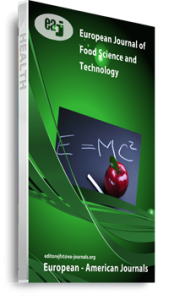Oyster Mushroom (OM) is among over forty (40) species of mushrooms which belong to the genus Pleurotus ostreatus. Little interest has been shown in the cultivation of Oyster mushrooms Nigeria until recently. The aim of this study was to cultivate Oyster mushrooms on rubber wood sawdust as base substrate, and to evaluate the nutrient composition in the first harvest (15th day) and final harvest (34thday). At harvests, phytochemicals including, phenolics, saponins, flavonoids and alkaloids, and antinutrients including, tannates, cyanates, oxalates and phytates were detected in the mushrooms. The proximate nutrient composition gave 44.64±0.61mg/100g of total carbohydrate content and a protein content of 21.71±1.09mg/100g. Fat (4.52±0.15mg/100g) and fibre (11.42±1.05mg/100g) were quantified. These values were not significantly different between the 1st and 2nd harvests. The Energy value was 308.08±5.44 Kcal/100g and 316.01±4.75 Kcal/100g for the 1st and 2nd harvests respectively. Vitamins detected included, Vitamin A (81.22±3.51 IU); Vitamin C (27.88±0.05mg/100g); Vitamin D (2.92 ± 0.25mg/100g); Vitamin E (24.61 ± 0.60 mg/100g); Pantothenic acid (89.09±5.72mg/100g); Niacin (27.01±3.75mg/100g) and significant (p<0.05) concentrations of Vitamins B1, B2, B6 and Folic acid. Mineral elements detected in the Oyster Mushroom included, Fe (56.44±2.7mg/100g); Zn (3.44±0.95mg/100g); Se (5.0±0.02µg/100g); Mn (1.55±0.42mg/100g); P (922.05±10.12mg/100g); Mg (15.45±1.41mg/100g) and Cu (0.71±0.22mg/100g). The core electrolyte concentrations detected include, Na (13.21±1.22 mg/100g); K (1085.09±24.08 mg/100g); Ca (32.17±3.77 mg/100g) and chloride (17.44±3.25 mg/100g). The nutrient composition of the mushroom confirms the claims that Oyster mushroom may be classified as a functional food, because it provides health benefits to all ages. We conclude that rubber wood saw dust proved an excellent base substrate for growing Oyster Mushroom in commercial scale, and the quality of Oyster mushroom harvested met national regulatory standards, and international quality standards (EU specified limits) especially with respect to heavy metals contamination, and that CRC should commercialize their product outside the borders of Nigeria.
Keywords: Nutrients, health benefits., oyster mushroom, phytochemicals, pleurotus ostreatus

